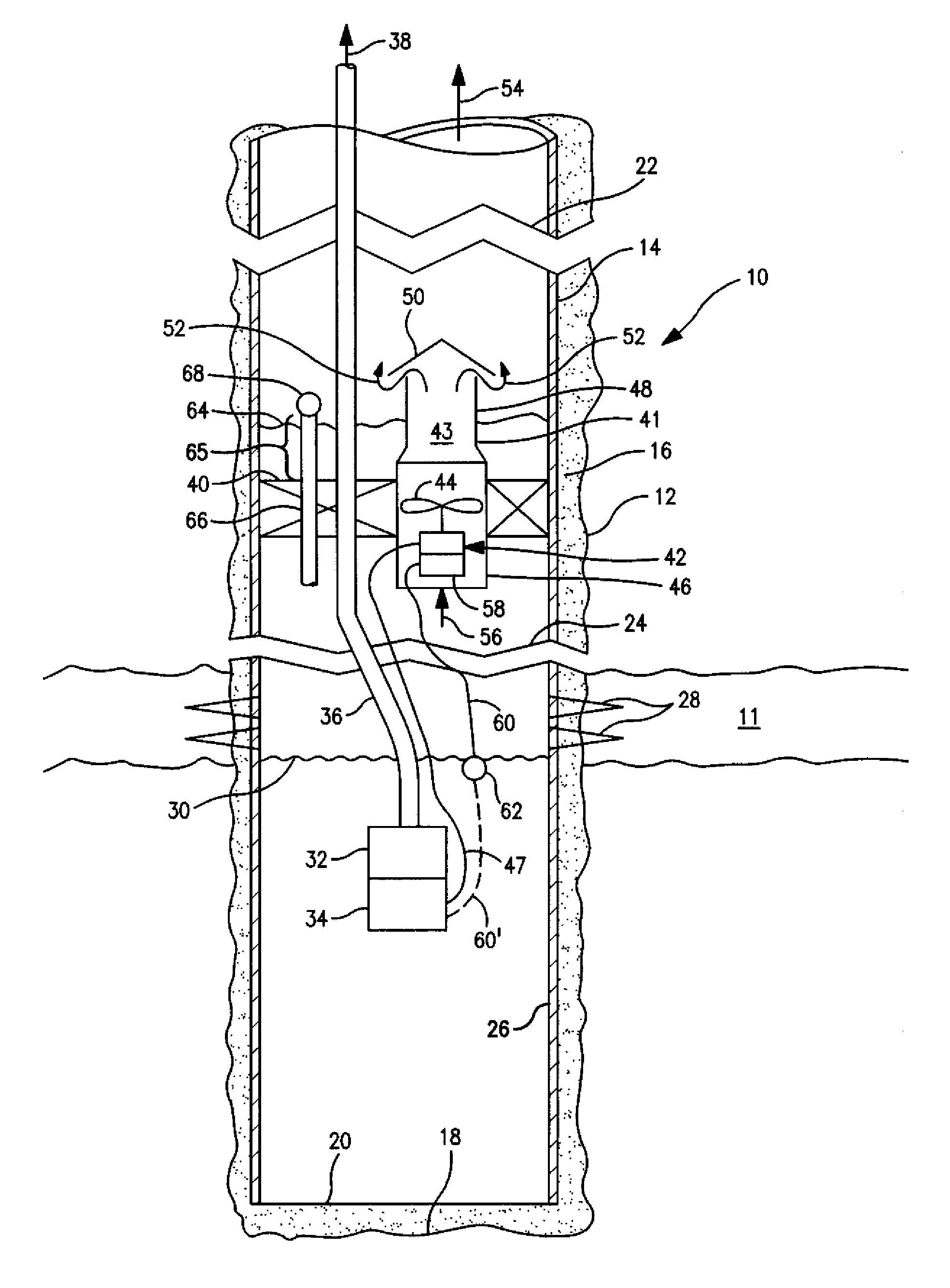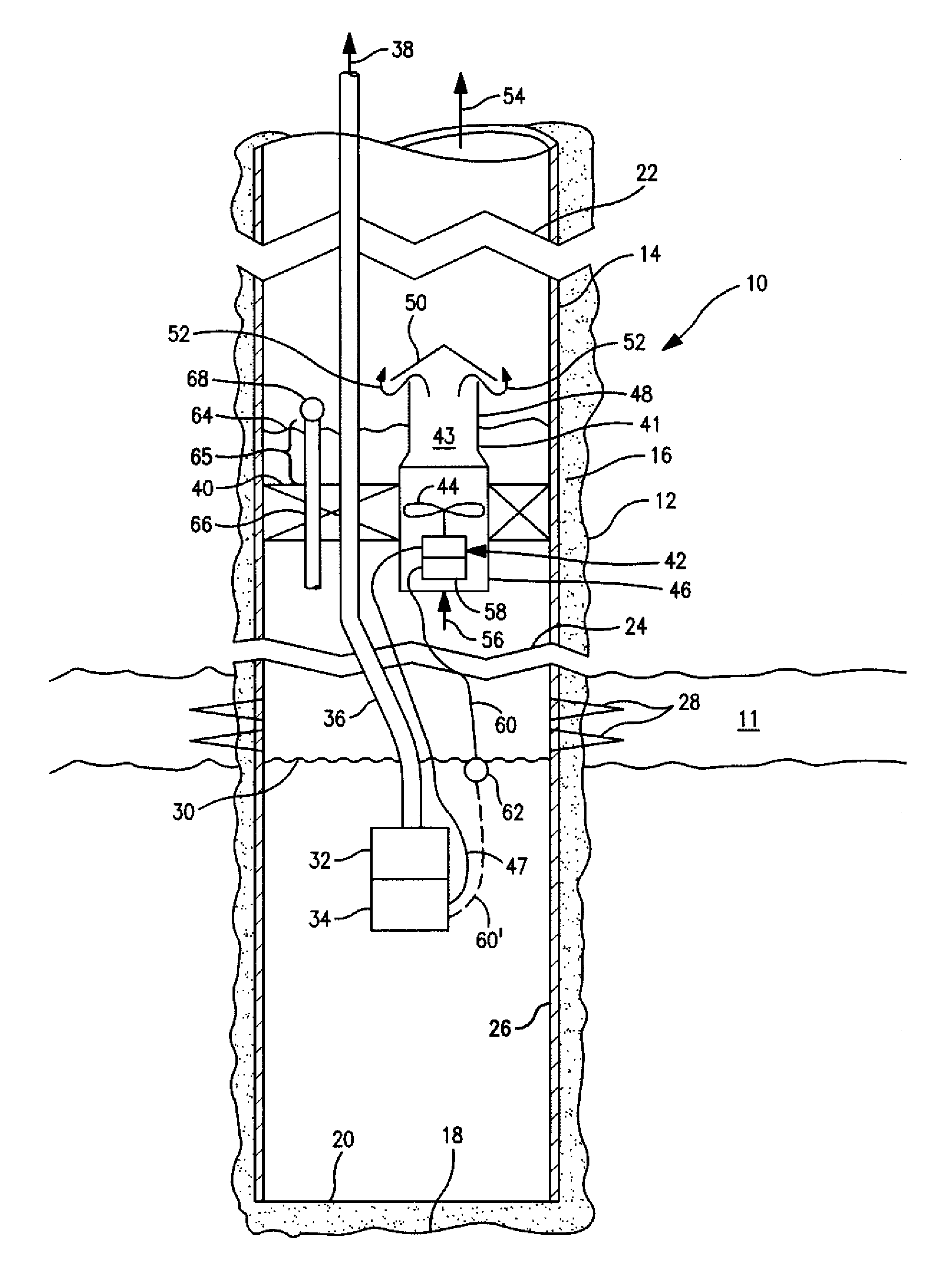Downhole gas flow powered deliquefaction pump
a deliquefaction pump and gas flow technology, which is applied in the direction of piston pumps, borehole/well accessories, survey, etc., can solve the problems of slow gas production from the well, increased installation costs, and clearly undesirable situations
- Summary
- Abstract
- Description
- Claims
- Application Information
AI Technical Summary
Benefits of technology
Problems solved by technology
Method used
Image
Examples
Embodiment Construction
[0010]In the FIGURE, a well 10 is shown penetrating a subterranean gas-bearing formation 11 which may produce quantities of liquids, such as water, oil, mixtures of water and oil and the like. The oil may be an oleaginous substance which commonly may be referred to as oil. Well 10 comprises a wellbore 12 which includes a casing 14 cemented in place with cement 16. The well extends to a bottom 18 of wellbore 12 with the bottom 20 of the casing positioned slightly above bottom 18. Broken sections 22 and 24 indicate that the well is not to scale, especially with respect to length.
[0011]Perforations 28 are positioned to provide fluid communication between gas-bearing formation 11 and an inside 26 of casing 14. As shown, liquid has accumulated in well 10 to a level 30 beneath perforations 28 and a packer 40 which is positioned to sealingly shut-off the inside of casing 14 as shown. A pump 32 is positioned beneath liquid level 30 although pump 32 could be positioned at any level from whic...
PUM
 Login to View More
Login to View More Abstract
Description
Claims
Application Information
 Login to View More
Login to View More - R&D
- Intellectual Property
- Life Sciences
- Materials
- Tech Scout
- Unparalleled Data Quality
- Higher Quality Content
- 60% Fewer Hallucinations
Browse by: Latest US Patents, China's latest patents, Technical Efficacy Thesaurus, Application Domain, Technology Topic, Popular Technical Reports.
© 2025 PatSnap. All rights reserved.Legal|Privacy policy|Modern Slavery Act Transparency Statement|Sitemap|About US| Contact US: help@patsnap.com


